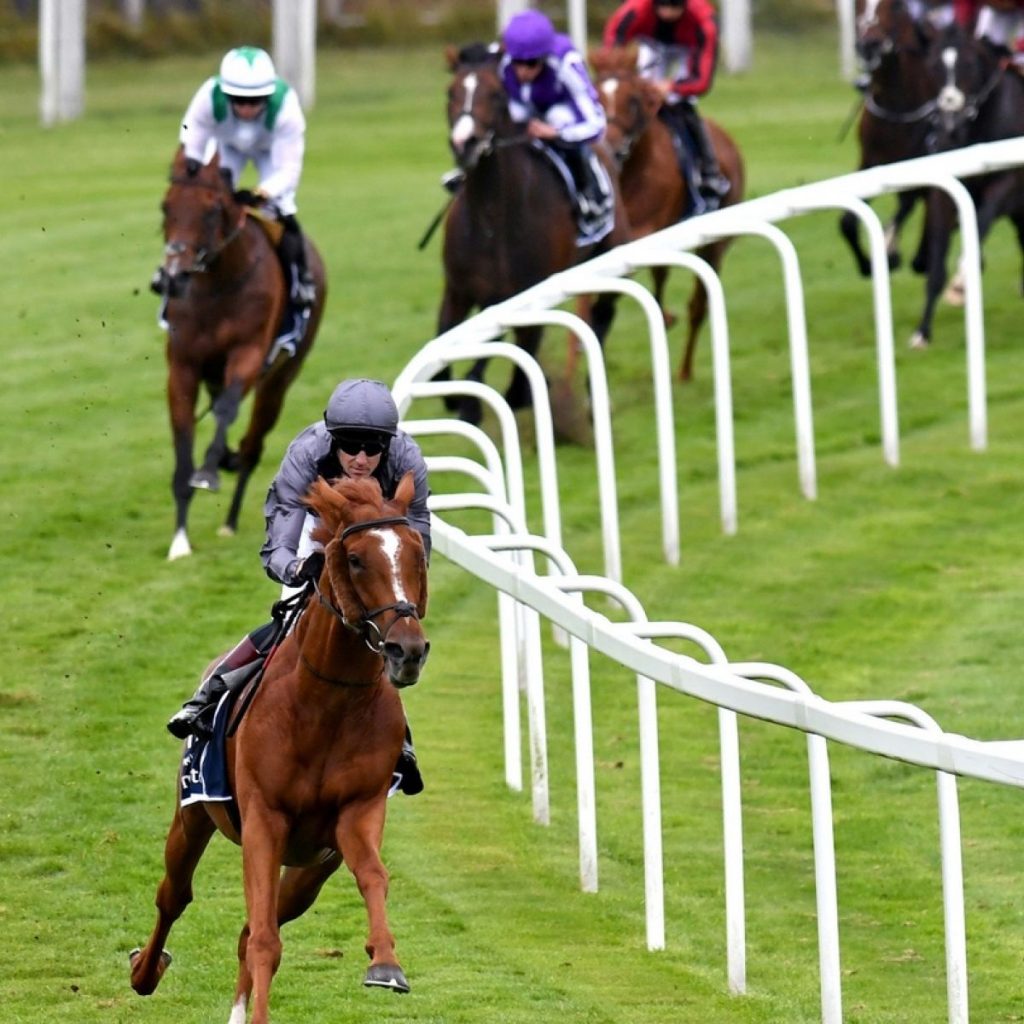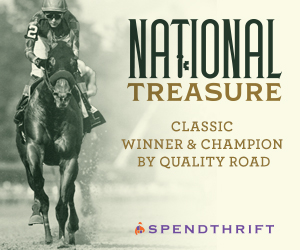
On the Gate to Wire podcast Episode 2, Michael Vale asked Pick 6 King, Jon Stettin to comment on the winning ride executed by Ricardo Mejias on the long shot, Dean Martini in the Ohio Derby.
Jon answered “Nowadays, aggressive rides win more than the patient ones.’’
A few hours later, one of the world’s most prestigious classics, the Investec Epsom Derby 2020 unfolded in a way that fit perfectly with Jon’s comments.
The race provoked voices of discontent all around, as bettors, sportsmen and analysts were all left very frustrated.
Britain journalist of the Year, Lee Mottershead, wrote
“The Derby left me Bewitched, Bothered and Bewildered.’’ Nicholas Godfrey called it “a deeply unsatisfactory contest. The fact that the order didn’t change during the race and that the 2nd and 3rd finishing horses were at huge odds doesn’t look inspiring.’’
The next day Racing Post headlines were: “It is easy to blame the jockeys, but in the Derby, it looks justifiable”. When things like this happen, jockeys are always the scapegoats, and even wise men like Bart Cummins could be heard saying: “A lot of jockeys can ride but very few can think!”
Because 80% and 90% of any jockey’s horses will not win, the losing bettor will quickly suspect them as either crooks or idiots.
The Jockeys:
A lot of ink was used before the Derby over the team tactics Ballydoyle was likely to employ. With so many runners, O’Brien was in perfect position to place his runners to win. However, O’Brien declared beforehand “Team tactics form no part of pre-race preparation at Ballydoyle. I promise you! never ever”. During the big race build up, concerns were expressed in public by both the owners of Kameko and English King. The latter said “Team tactics threaten to devalue racing at the highest class. A pacemaker is one thing but sitting there and forming a peloton is quite another thing.’’
In fact beforehand, Serpentine was considered just that!! A pacemaker. A horse that broke his maiden just seven days earlier, ridden by a jockey riding only his 8th race of the season and who didn’t see a winner’s circle since October 2019.
In the history of the race, O’Brien has had many runners that forced the early pace just to be swallowed entirely in the stretch.
In the last decade: At First Sight (2010), Memphis Tennessee (2011), Astrology (2012), Hans Holbein (2015), Port Douglas (2016) and Douglas Arthur (2017) have all looked to have a healthy advantage at the top of the stretch, just to disappear in the final stage of the race.
Some observers argued that Serpentine may be an exceptional horse for doing what his stablemates weren’t able to do…to get home.
Expert Kevin Blake went on: “To devalue his performance or label it as a fluke is very unfair and indeed misguided. He will warrant respect wherever he goes from here!”
Simon Rowlands went on “With a different race make-up, English King, Russian Emperor, Kameko and Mogul would have finished closer to Serpentine but not necessarily to beat him, and not for me anyway!”
Simon concluded: “The winner is very likely very good”.
Actually, a horse race is a very complex system with many interrelated and interconnected parts and components, but as John Stettin stated, front-running tactics have always conferred a significant advantage, anywhere in the world at any given time in history.
In the UK, Timeform’s Adam Houghton wrote in May 2020: ‘’if you backed every front runner that ran on the flat in the UK for the last 5 years, out of 31 500 races, you’d be operating at a strike rate of 18.3% and would have returned a profit of nearly 20 000 points.’’
In the US, Steve Klein did a similar study in “The power of Early Speed” out of a sample of more than 200,000 races run over 30 different race tracks. He found a strike rate of 28% with a profit of 110,000 points if you had backed the front runner after the first call.
Serpentine won the race from a very well executed front running performance, but was it an aggressive one?
Well, according to the data, it appears that Serpentine was by far the slowest away among the main protagonists. He was then allowed to get easily to the front without much competition. Once there, he had an uncontested lead that gave him the luxury to race at an even pace.
If you calculate the range of the fractions (Slowest fraction minus Fastest one) for each 1/8 fractions, Serpentine has the smallest range, meaning that he was the horse that ran the closest to an EVEN PACE. The same applies on the 3 half mile sections. Serpentine has the smallest range.
According to the data, it was not an aggressive ride, it was just a “ballad”at an even pace.
Serpentine’s jockey, Emmet McNamara said: “I knew I wasn’t going a million miles an hour, so I was imagining they might be ignoring me. I was hoping the clock in my head was working, because I thought I’d saved enough through the first half.’’
According to the tab above that compares the fraction to the standard time, showing each fraction for Serpentine EVEN, the clock in McNamara’s head was working very well.
Even Pace:
It is well documented that the most efficient way for a horse to race is to run at an even pace, so each furlong is done in a similar time. At an even pace, the energy is distributed evenly during the race.
In his book: “Breeding the racehorse”, Frederico Tesio wrote “A jockey who is riding a horse capable of running a mile in 1.39 should not hold him back so that he would run it in 1.43, for this might enable an inferior horse to pass him and win in 1.42. It means a jockey should do its best to get to the finish line as fast as possible, not being preoccupied by what his rivals are doing.’’
In any middle distance, in any sport and race, the EVEN pace strategy is more economical and is the one that produces records.
If the objective is to cover a distance in the quickest time possible, the best is always to maintain an EVEN pace.
As soon as sports medicine invaded the human athlete world in the 50s, Robinsons et al. proved in 1958 that the even pace strategy was superior to any other way of running, cycling, rowing etc.
More recently Foster et al. (1993) studied the effects of different pacing strategies on a 2000 m cycle time trial.
They had a full team of high-level cyclists complete the test and their conclusion was again unequivocal:
Without any doubts, EVEN pacing was the best strategy for middle distance Athletic events, and they found negative consequences for even small variations of this strategy.
Last fall, when Eliud Kipochoge broke the Marathon two hours barrier in Vienna, he got the assistance of a pace car that flashed laser light on the road to assure that his pacemakers were keeping an EVEN pace to the millisecond conducive to the record.
The value of leading early and being the master of the pace has great advantages and it is often underestimated by jockeys, trainers or bettors. However, if you place your entire handicapping approach on who makes the early lead, you are in for a lot of frustration and torture. Why?
The power of the horse in second position:
The famous front running prodigy Steve Prefontaine said “when you control the pace, you control the race!” It is an inspiring and elegant quote, the only problem is that it is wrong.
If the front-runner set the pace, we call it the pacemaker; however, it is the second horse that actually sets the pace. He is the real controller of the tempo, it is he that decides to put pressure or not on the front runner.
In fact as any shrewd racing observer knows, a race is not won at the finish but at the start. It is where everybody gets into position and once the makeup of the peloton is set, it seldom changes. The horse in the second position then has the real control of the pace. Brisnet has a word for it: They call it the EP (“Early Presser”). In America, seasoned handicappers know that pressure on a front runner is more detrimental than fast fractions.
So, either the second horse puts pressure on the front runner (in this case he will compromise him) or he will give him some leeway. When this is the case, the front runner gets an easy lead and he can then dominate at an EVEN pace and very difficult to beat.
The second horse is in position to control the entire field as his actions will determine the pace and dynamic of the race, but it is far from being the best position in the field. If he challenges the front runner, he will set things up for the closers and if he leaves the front runner without pressure, he will always have a real challenge to run him down.
So even if the second horse is in control, he is always at a disadvantage whatever he does. The second horse is really “Stuck between a rock and a hard place”.
The most crucial moment of the Derby was when at the 8th pole, Tom Marquad on Khalifa Sat allowed Serpentine to open up several lengths on him. If he had not done so, the entire field would have kept contact with Serpentine and the race would have had a completely different shape as the favorites would have been in position to strike late.
Voices were critical of Tom for creating the “break” and not realizing that the danger was in front of him and not behind.
However, one might think that if he would have put early pressure on Serpentine, he would never have finished 2nd in the Derby on a 50/1 shot.
Jockeys as employees:
Jockeys are the first to admit that during the running of a race, they are often perfectly aware that they should not be where they are in order to win. However, they cannot do anything about it, because their position is what was agreed beforehand with the trainer and owner. Given the choice, a jockey will usually prefer to follow his orders and protect his job rather than winning a race disobeying. Losing a race is no big deal for a jockey, when he knows that he will ride the horse again and his position is secure with the entire stable of the trainer.
We often hear trainers saying “It is ok to get beaten because my instructions were wrong, but it is not ok to get beaten because you took an initiative on your own”.
Trainers are mapping the horse’s whole career and sometimes use empiricism along the way, experimenting about tactics, race position, distance etc. They just don’t want jockeys compromising long-term designs in taking liberties.
In a heated debate, the colorful John McCrick was reminded by champion Ruby Walsh, that jockeys don’t feel any real responsibility towards bettors, not during a microsecond does he think about them. His responsibilities lie toward his bosses: Trainers and Owners.
Owners pay the bills and want to have a sense of control, trainers want to retain their jobs and have their bills paid, jockeys want to keep owners and trainers happy so they continue to use their services.
Racing folklore is full of colorful stories that illustrate these principles. Let’s recall just a few high profile cases that have been exposed very publicly:
- In 2015 the genial trainer Luca Cumani was sacked by Sheikh Obaid Al Maktoum for “ refusal to bow over the demand of the owner”. Explanation voiced by the Sheikh: “ I am a military man and I want people to be obedient!” “When I tell a trainer or a jockey something, they have to listen to me, not do their own thing!”
- In 2005, on the very same Epsom lawn on which Serpentine met destiny, high profile owner, Daniel Wildenstein, when approached by a reporter after the Coronation Cup defeat of Vallee Enchantee, who suggested diplomatically that the filly has been unlucky in the straight, replied “Unlucky?!? She wasn’t unlucky, she was ridden by an asshole who didn’t follow instructions!”
- More recently, Godolphin’s main trainer, Saeed Bin Suroor discharged champion jockeys Frankie Dettori, Silvester De Sousa, and stubbornly refused for the last 4 years to use Godolphin contracted jockeys William Buick and James Doyle.
The reason? They ignored his orders and used his horses too early in races. He now hires apprentices and young jockeys on a daily basis that are able to carry on his precise instructions.
For a bettor, a jockey that leaves it all too late is a disgrace; however, as we saw earlier, a jockey is not working for the bettors.
A jockey is working for an owner and a trainer and for the most part they will always prefer a jockey that produces a horse too late than too early.
Indeed, the trainer of the Derby favorite English King, Ed Walker said after the race: “We were never going to ride him aggressively. I thought Frankie gave him a good ride, I have no regrets whatsoever. The most important thing for me is English King hit the line hard!”
Dave Simcock the trainer of Mohican Heights is well known for his obsession to see his horses finishing strong and galloping out powerfully after the line. He confessed to me repeatedly in the past that he will always fancy a losing race with a solid finish than a winning one in which his horse paddles to the line having been committed too soon.
In fact all medium sized trainers that don’t have an embarrassment of riches in quality and quantity will favour “patience over aggressiveness”.
Why is that? If front running is so efficient to win races why is there such a lack of commitment? To quote just a few analysts “Speed is dangerous” Michael Vale, “You cannot beat what you cannot catch” Jon Stettin. “Stop Grabbing!” screamed the volcanic Mike Matchmaker at the jockeys that were taking the speed out of their mounts by pulling back.
The issue here is that bettors and handicappers are interested in winning, whereas trainers are responsible for the long-term development of the horse’s career.
Racehorses grow and progress. The trainer’s goal is to have the horse at one stage of his career blossoming and realizing his full potential, and it is often a long road full of obstacles, frustrations and adjustments.
It is not for nothing that if you asked any successful trainer of the past what is the main quality required in his profession he will unequivocally answer: Patience.
A race is not run in a steady and predictable fashion. Instead it is the result of many “ races within the race” the punches and counter punches of the thoroughbred competition.
Once a horse figures out what racing is about, he can get very good and reward the connection immensely.
Even a top horse can only run flat out for ⅜ of a mile at the maximum, after that his speed will inevitably decrease significantly and if the finish line is still to reach, the horse will work “in the hard”.
In order to race effectively, a horse has to be rated and his energy regulated by his jockey.
If he starts his race too early, he will hit a “wall” and run in distress for a little while, which is exactly what trainers don’t want to see.
A fatigued horse decreases its pace, shortens its stride, vertical motion and breathing effort are increased. In that state, the horse has biochemical changes that increase the risk of injuries as the stress on its limbs are exaggerated. The muscles and tendons that serve to dampen the loading forces are fatigued and cannot complete their shock absorption role. A UK wastage study (Jeffcott and Rossdale) showed that 53% of horses in training will show significant lameness at some stage during the season and in 20% of the cases, lameness is sufficient to prevent racing again. No wonder that trainers want to protect and avoid injuries at all costs.
Also, it has been proven that horses that keep running after reaching a stage of exhaustion are at severe risk of EIPH (Exercise Induced Pulmonary Hemorrhage). It is because the high vascular pressures cause stress failure of the pulmonary capillaries, resulting in hemorrhage into the alveoli. It is created by the excess fluid in the gas exchange region of the lungs.
Finally, trainers know that a horse that is startled and roused by his jockey when tired and exhausted with the resort of a whip can become very upset by the experience. When this is the case, a horse will take a long time to recover and display behavioral traits like nervousness and anxiety. He will often be off his feed for a while and become difficult to train.
His next visit to a racecourse can see him being highly strung and keen during the race and this is a prospect that no trainer wants to be confronted with.
Conclusion:
To conclude this small and modest debrief of this extraordinary race in all sense of the term, we can recall the famous quote from Angel Cordero:
“Any horse can win on any given day!”, and without devaluing the performance of the winner we can say that a lot of people: jockeys, trainers and owners would love to have a chance to rerun this Epsom Derby 2020!!



